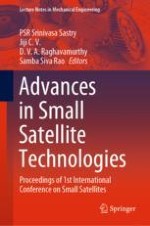2020 | Buch
Advances in Small Satellite Technologies
Proceedings of 1st International Conference on Small Satellites
herausgegeben von: PSR Srinivasa Sastry, Prof. Jiji CV, Prof. D.V.A. Raghavamurthy, Prof. Samba Siva Rao
Verlag: Springer Singapore
Buchreihe : Lecture Notes in Mechanical Engineering
